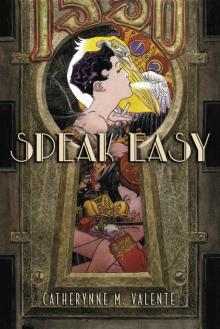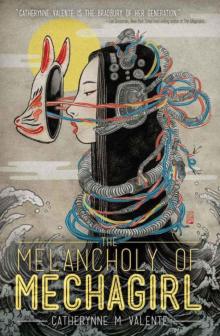


Inquisition
Green, Toby
Stepping back from the case and thinking about the world which it reveals, one touches a reality that is both familiar and strange. Here on the baking plains of the Castilian plateau, people were earnestly visiting one another’s homes, discussing theology and thinking fervidly about the mysteries of prayer and devotion. All this can seem remote and yet violent disagreements about religion and the customs of daily life are not without a certain resonance.
One of the problems for the Inquisition in dealing with the alumbrado group was that it was not exactly sure what sort of heresy this was. But this did not have to be too much of a problem as prurience and sexual frisson could fan the desire to censure. When María de Cazalla was arrested in 1532 she was accused of saying that ‘she was closer to God having sex with her husband than if she had been performing the most high-minded prayer in the world’,22 while a beata and alumbrada of Salamanca, Francisca Hernández, engaged in an unusual type of religious experience with the priest Antonio Medrano, where it was held that ‘male and female devotees could embrace one another naked as well as clothed’.23
The reality was that confusion over the new heresy developed because there was no overarching heretical movement of alumbrados. Alumbrados themselves could be divided into two groups, recogidos, who sought to find peace and union with God through contemplation, and dejados like Francisca Hernández, who held that no thoughts should be refused as giving oneself to God was enough for mystical union.24 The philosophy of alumbramiento in fact was first fully articulated by the Inquisition itself, in its edict of faith of 23 September 1525, and was never discussed in these terms by any of its supposed adepts.25 As such, this was a philosophical schema which, like the ‘Judaizing’ of the conversos, had substantially been invented by the Inquisition. Similarly, there had been no network of alumbrado fifth columnists until the Inquisition had identified it. Though ideas had been circulating which were not orthodox, these had not taken on the characteristics of a movement until the Inquisition had labelled it and started to prosecute it.
Indeed in many ways the perception of heresy in the alumbrados owed much to the perception of the conversos. Alcaraz, Cazalla and Cruz all came from converso families, and some of their relatives had been punished by the Inquisition.26 At first Alcaraz was himself portrayed as a Judaizing converso, being accused of supporting dejamiento as a way of bringing Castile to the Mosaic law.27 When Alcaraz showed himself utterly ignorant of Judaism, the inquisitors decided that this new movement had more in common with Lutheranism. But even though the shape of the accusations changed, some inquisitors stated that the danger was exacerbated because alumbrados were all conversos.28
Thus the old way of conceptualizing heresy became a bridge to the new. When many conversos at the court of Charles V turned to the reformist ideas of Erasmus of Rotterdam, they were labelled by their enemies alumbrados.29 Here was another convenient catch-all phrase, a name which would stick. Such labelling, it turned out, was a prelude to destroying the followers of these new ideas.
FROM HIS BASE in the Low Countries, with its huge skies and burgeoning wool industry, Desiderius Erasmus had produced a string of works which urged the recasting of Christian faith in Europe. Erasmus’s influence had spread rapidly. During the 1520s a veritable fever struck the nobility in Spain as everyone sought to become acquainted with his works. One of his Spanish admirers wrote on 1 September 1526 that the inquisitors had ordered that no one should write against him, and that:
Your enemies went to the houses of the noble ladies, and to those of their daughters of confession, and to the nunneries, persuading them that they should not listen to anyone who has read Erasmus, or even picked up any of his works . . . but as forbidden fruit is a great stimulus to appetite, they managed to use every trick they could to understand Erasmus, looking for people to interpret him, which meant that his works soon became very well known in noble houses and in the nunneries.30
In 1525 Erasmus’s principal works in Latin were published at the University of Alcalá, and in 1527 a conference organized by Inquisitor-General Alonso de Manrique at Valladolid discussed his ideas. The following years saw the publication of numerous translations of his works.31 This early admiration owed much to Flemish influence in the court of Spain’s Habsburg King Charles V, many of whose retinue were personal friends of Erasmus. But there was too a resonance in Erasmus’s emphasis on spiritual renewal and intimacy with God for a nation which, with the defeat of the Moors and the discovery of America, saw itself as burdened with a historic purpose.32 The universalist tendencies of Erasmian thought perfectly suited the universalist ambitions of Spanish rule and its sense of imperial destiny.33
Here one should feel some sympathy for Spain. In the space of fifty years it had moved from a state of permanent civil war to leading the fightback against the Muslims following the fall of Constantinople in 1453, and discovering and beginning to settle an entirely new continent. According to the ideas of the time, some sense of religious destiny was inevitable.
In these circumstances, there was ideological ferment. The friars in particular loathed Erasmus and his challenges to monasticism. When Inquisitor-General Manrique confronted the friars in 1527 and ordered them to obey his commands and to stop burning Erasmus’s books, they replied that the wickedness was such that divine authority superseded that of human beings.34 This was a sign of things to come; when Charles V’s court eventually departed Spain for Bologna, where Charles received the imperial crown from Pope Clement VII on 24 February 1530, the anti-Erasmus faction set to work.35
First of all, in 1529 Inquisitor-General Alonso de Manrique was himself sidelined to Seville, where he spent most of the rest of his life in his archbishopric until he died alone and ignored in 1538.36 Then accusations were levelled at some of the Erasmian figureheads in court circles. In 1530 Juan de Vergara, the secretary of Alonso de Fonseca, archbishop of Toledo, was accused of Lutheranism, and an inquisitorial case against him began in July 1533. The Erasmian Mateo Pascual was arrested by the Inquisition in June 1533, and Alonso de Virúes, who had spoken in favour of Erasmus at the 1527 conference at Valladolid, was arrested in 1535. One of Inquisitor-General Manrique’s friends, Juan del Castillo, was burnt to death, and four other friars followed.37 Other cases were pursued; in 1536 Miguel Mezquita, who, like Miguel Costa of Cinctorres, had travelled in Italy, was burnt in Valencia for holding Lutheran opinions which merely derived from the study of Erasmus.38
This was a veritable witch-hunt. Most of these people survived the inquisitorial trials, but their careers were ruined; those who could escape, did so.39 Whether they were genuine Protestants or merely Catholics attracted to the ideas of Erasmus became an increasingly moot point, because both groups were targeted. The Inquisition, having begun its work on converso alumbrados, was now shifting its attention.
Yet the old categories of prejudice persisted. As the 16th century progressed mystical writers increasingly became targets of the inquisitorial authorities. With its mania for bureaucratic legalese, the Inquisition was bound to be hostile to any sense of internal spiritual enlightenment such as was promised by some of the great Spanish mystics of the age.40 Moreover, just as with the alumbrados, many of these writers were themselves of converso lineage. As the Inquisition toyed with investigating Juan de Ávila and Teresa de Ávila – later beatified – and cast Luis de León into its cells for five years in the 1570s, it was taking issue with the ideas of a whole range of converso descendants.41
This was not because conversos were innately heretical. The fact that so many of them developed complex Christian theological ideas shows that for many their original conversion had been voluntary. The predominance of conversos among alumbrados and the controversial theologians of the time was, rather, because the dramatic nature of their turn to Christianity pushed many conversos towards both a more intense and a more personalized sense of Christianity.42 This led to a profound search for meaning, and all too often towards doctrines which were out of step with the orthodoxy.
Thus in trying to clamp down on one ideology perceived as dangerous, the Inquisition had created and codified another which it would come to see in the same way.
Murcia 1552–62
THE NUMBER OF ERASMIAN alumbrados and Lutherans tried in the mid-16th century was small. Their significance for the Inquisition lay in the fact that their prosecution opened the way towards an ideology in which repression could move beyond the conversos and become universalized. Yet in order to persuade the population that the enemy could be everywhere and anywhere, it was also sometimes necessary to remind them of the continuing danger of the old enemy. Thus while the notion of the expanding Protestant threat was feeding into Spanish society a terrible crypto-Jewish conspiracy was – as Inquisitor-General Valdés noted in his abovementioned letter of 1558*5 – uncovered in the region of Murcia.
The problems began in 1552 with Inquisitor Sánchez. This individual may have been in Murcia to enforce conformity on the faithful, but there was little that was faithful about him. Sánchez had propositioned a married woman who had gone to him for advice about a civil court case, saying that if she would submit to his desire he would get the case dropped.43 Indeed, Inquisitor Sánchez seemed particularly attracted to married women. He had developed a ‘close friendship’ with the wife of one of his inquisitorial prisoners, ‘closing himself in with her day and night’. When a married woman whose husband was away went to see him regarding an inquisitorial matter, he propositioned her and ordered her to come back to his apartments later on. He had also slept with a married converso woman and had got a young girl pregnant when she had come to ask him for advice. While secrecy was the cornerstone of inquisitorial procedure, Sánchez was so lacking in this faculty that he left the doors of his house open all night for prostitutes to come in and out at their leisure; there they lowered inquisitorial apparel without lowering inquisitorial zeal.
Sánchez’s demands were mirrored by those of his staff. One official, Diego de Valdés, a relative of Inquisitor-General Fernando de Valdés, was accused in 1551 of seeing through his posting in Murcia with his mistress, with whom he had several children.44 Meanwhile, one of Sánchez’s messengers, Blas de Vega, was a drunkard who spent his time in brothels and bars and could not read or write. On one of his inquisitorial errands he took a girlfriend with him, who he slept with publicly. All this was the cause of great scandal and not inconsiderable irony, since one of the blasphemies which the Inquisition began to prosecute at the time was the statement, ‘Simple [unmarried] fornication is not a sin’.45
Believing that discretion was the better part of amour, the Suprema replaced Sánchez with a new inquisitor, Dr Cristóbal de Salazar, who had previously been the inquisitor of Granada. But Salazar was not the sort of person who would necessarily make things better. The notary of the Inquisition, Diego de Herrera, wrote a letter on 6 October 1553, noting that in Granada Salazar had a reputation as ‘a man who was a great fan of women’; already in Murcia, he had begun a relationship with Catalina Lopez, the daughter of a widow who lived opposite his apartments.46 Unlike his predecessor, however, Salazar was a determined inquisitor as well as a determined libertine, and he quickly began to interrogate the moriscos of Murcia in such a terrifying manner that they rapidly agreed to all of his insinuations. When some of the notaries protested that charges had been invented, Salazar threatened to throw his colleagues into a cell and clap fetters on them, and they all backed off.
Soon after Salazar’s arrival in Murcia, the morisco Juan de Spuche was arrested for continuing to perform Islamic rites. This was based on the fact that he had been seen washing his face and hands in a fountain.*6 Spuche confessed that he had committed this dastardly act after coming back from chopping wood in the fields. Such a clear sign of heresy required interrogation. Spuche was tortured. He denounced many people but revoked his confession as soon as he was out of the torture chamber. This merely intensified his suspiciousness in Salazar’s eyes, and Spuche was tortured again. This time his hands were damaged so badly that he was unable to dress himself. He died soon afterwards, and his corpse was burnt in statute in an auto.
Thus it was not for nothing that Salazar was described by Herrera as ‘terrible in appearance and . . . excessively rigorous in his procedure and his judgments’. Salazar’s general modus operandi is summed up by the case of a fisherman who did not give as much of his catch to the inquisitor’s page as Salazar had wanted, since the catch that day had been a poor one and there would not otherwise have been enough to satisfy everyone; the fisherman was hauled before Salazar and spent the whole day being interrogated.
Herrera’s accounts of Salazar’s methods came too late to the Suprema. Two months before, Salazar himself had protested about Herrera, who had been stripped of office on 14 August 1553.47 But the accuracy of Herrera’s reports was soon to be amply demonstrated. By 1558 Salazar had become involved in a series of running disputes with the civil authorities of Murcia.48 These people, Salazar complained in a letter of 14 June 1558 to the Suprema, were inspired by those ‘who bear ill will to this Holy Office’ and were his enemies. In a revealing phrase which the ‘crypto-Jews’ of Murcia would soon come to understand all too clearly, Salazar declared that he esteemed his honour ‘more highly than a thousand lives’.
That same summer the plague descended on Murcia. The devotion of the inquisitorial team did not extend as far as putting their own lives at risk for the sake of the truth; they fled the city and descended on the small town of Hellín. Salazar lodged with one Miguel Mateo, who lived with his thirty-year-old widowed daughter Catalina. Salazar quickly insinuated himself into their company, and ensured that he did not have to go hungry; a typical lunch consisted of a leg of bacon, six seasoned chickens followed by twelve roast chickens garnished with bacon, a roast goat, two medium-sized dishes of blancmange, cherries, apricots, all washed down with both white and red wine.49
Such repasts were hardly designed to cool passions, and Salazar rapidly struck up an intimate relationship with the widow Catalina.50 Tongues began to wag, and one resident, Lope Chinchilla, became particularly suspicious of the relationship. Catalina had been seen publicly with Salazar at the window of the building where the inquisitorial court was held, watching bullfights, and Chinchilla let slip his thoughts one evening as Salazar was devoutly playing a game of cards.
On 16 January 1559 Lope de Chinchilla was arrested by the Inquisition on a charge of crypto-Judaism. He had been ‘accused’ by a ‘Jewish friend’ of Juan de Valibrera, and by Juan de Ávila and his wife, who had all been arrested on charges of crypto-Judaism by Salazar. The accuracy of this testimony can be judged by the fact that Salazar went ‘alone on feast days and by night to the jails and persuaded people to testify against others, and got third parties to do the same and even went alone without any companion or pretence of a legal hearing to torture them’. Yet in spite of all this evidence and Salazar’s history, Lope de Chinchilla was burnt on 8 September 1560, largely because he had spoken out about an appalling abuse of power.
The next few years saw a conflagration in Murcia. Numbers are not known in full because of the loss of records but in 1562 nineteen Judaizers and two moriscos were burnt,51 and the following year four more Judaizers.52 In 1569 the people of Murcia complained to Rome that more than 500 people had been burnt, screaming their Catholic faith to the end; when envoys protested to the Suprema at the beginning of the clampdown, they were arrested on their return to Murcia and thrown into the inquisitorial jail, and when a visitor from the Suprema attempted to free some prisoners he was censured by Inquisitor-General Valdés and told never to do this sort of thing again.53
In this ghastly tale of venality and paranoia there is of course more than an echo of the doings of Lucero in Cordoba fifty years before. Yet it is a mark of the changing times that, whereas in Cordoba the city’s protests led to the council at Burgos*7 and a decline in the prestige of the Inquisition, the complaints from Murcia passed more or less unnoticed. Questioning the integrity of the Inquisiti
on was now just not done, and whereas Lucero’s paranoia had been challenged, Salazar’s was in vogue.
WE SHOULD NOW RETURN to this letter of Inquisitor-General Valdés from 1558, and the numerous threats to the faith which he mentioned in it. Among those had been that posed by the converted Muslims, the moriscos,*8 who as we have just seen had been particular targets of Inquisitor Salazar during his early years in Murcia. The morisco problem was one which by the end of the 16th century would be centre stage in Spain.
These moriscos were the descendants of the Moors who had been forced to convert to Christianity in Granada in 1502, and in Aragon and Valencia in the 1520s. The problems posed by the two groups were distinct: in Granada, the moriscos were descended from the population of the last Moorish kingdom of Spain, but in Aragon and Valencia they had been living under Christian rule for centuries, which meant that they ought to have been much easier to assimilate.
However, the way in which the Aragonese and Valenciano moriscos had been converted had got things off to a bad start. Between 1520 and 1522 a civil war had raged across the region. This took the form of a popular rising against the nobility and was led by brotherhoods known as germanías. Since the Muslims of Aragon were overwhelmingly agricultural labourers who worked for the great lords, they were an easy target for the rebels. The Moors constituted a large part of the army of the duke of Segorbe at the battles against the germanías at Oropesa and Almenara in July 1521, and a third of the infantry of Viceroy Mendoza at Gandía on 25 July; in targeting them, the germanías could both defeat their enemies and salve their consciences by claiming a pseudo-religious motivation.54














